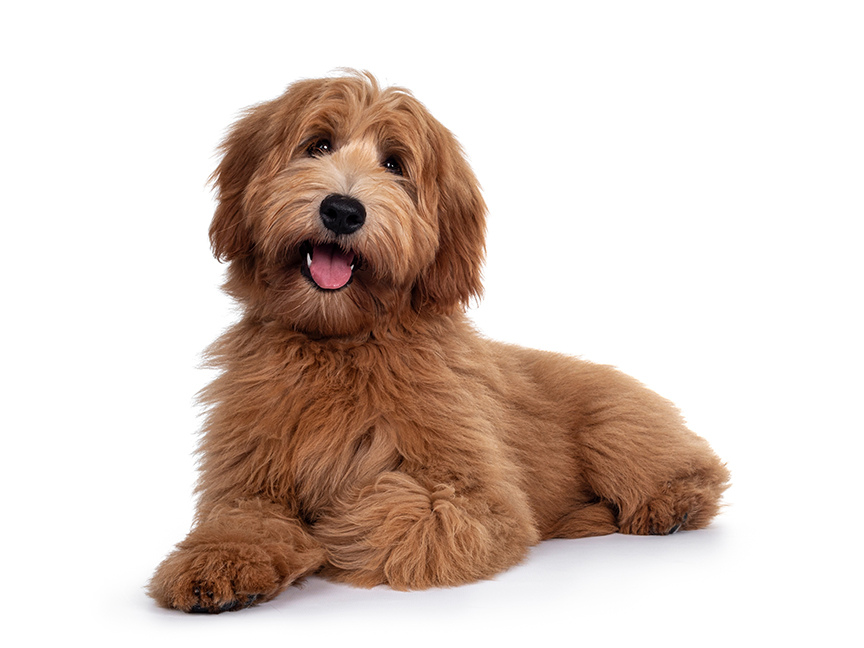THINGS TO CONSIDER WHEN CHOOSING A BREED
By Nicole Vaughn
Grooming Manager at Pawsitively Purrfect
Many people select a dog based in part upon their appearance, but they don’t always know exactly what they’re getting into when it comes to coat care.

As a professional groomer, I often hear owners exclaim they had no idea how much their short-haired dog would shed, while other owners struggle with the learning curve of how often their “non-shedding” dog needs grooming to keep their coat fluffy. With that in mind, here’s some information to help you avoid frustration, whether you are thinking of adding a pup to your family, or are dealing with the coat care of one you already have.
Pro tip
Don’t be fooled by how easy a puppy coat is to care for, as this often changes around 8 months to one year when the adult coat develops!
SHEDDING
All coats go through the process of individual hair shafts growing out, going dormant, and being replaced over time. Dogs who have fur coats that grow to a shorter, predetermined length replace (shed) their coats much more frequently than dogs often described as non-shedding, whose individual hairs will keep growing longer, much like our own hair. Sometimes, heavy shedding of shorter coats coincide with certain seasons and a dog will “blow” their coat (often in spring and fall), but they will still shed some throughout the year regardless. Non-shedding dogs continually shed hair too, but the process is much slower, as it is for us. As an aside, dogs with this type of coat are often described as “hypoallergenic,” but that doesn’t mean someone won’t be allergic to their dander, saliva, and other allergens that get picked up and held within the coat.
MAINTENANCE
Regular bathing and brushing will be the key to keeping any dog’s coat in good condition, plus shedding hair and allergens to a minimum. Whether you invest in the products and time to do this at home, or choose to take your dog to a salon is up to you. Gone are the days of harsh soaps and the recommendation to only bathe your dog when absolutely necessary. Using quality products and rinsing well means you can groom your dog as often as weekly, if needed, but for many pets every 4-8 weeks is ideal.
If you are wanting to keep a longer, fluffier coat you will need to be prepared to not only bathe and/or dry your dog between grooms, but definitely brush and comb their coat after they go outside or play, especially if they get wet.
MATTING & SKIN CARE
Longer coats that become pelted with mats can be too painful to pick out and the way clippers work is the blade must go under the matting – not through it – thus shaving the coat extremely short. If this happens, your pet may look funny to you for a while, but their comfort will definitely be worth it and the coat will grow back in time. Know that matted hair can hide as well as cause skin issues, such as hematomas! You will even see this happen when shorter coats are allowed to pack down and become too thick.
SHAVING
Last but not least, some people with dogs that have naturally short to medium length coats may consider shaving them at some point. Maybe they don’t like the look or upkeep of the longer “pants,” belly and leg hair, or they think shaving will keep their dog cooler, or cut down on shedding.
Unless it is for hygienic reasons (ie. an older dog), it is generally not recommended to do more than a light trim of these coats in order to avoid clipper alopecia. Sometimes a dog may have an underlying health issue which causes clipped hair to grow back in poorly, but clipper alopecia can strike the coats of healthy dogs who have been previously shaved, and their coats have grown back in successfully many times before. Unless you are prepared to deal with a potentially wonky-looking coat from clipping, consider more regular bathing and brushing to reduce shedding, and if your dog needs to be cooler, only shaving their belly.
Spoiler Alert
A shaved dog will still shed the same amount, the hairs will just be shorter!


